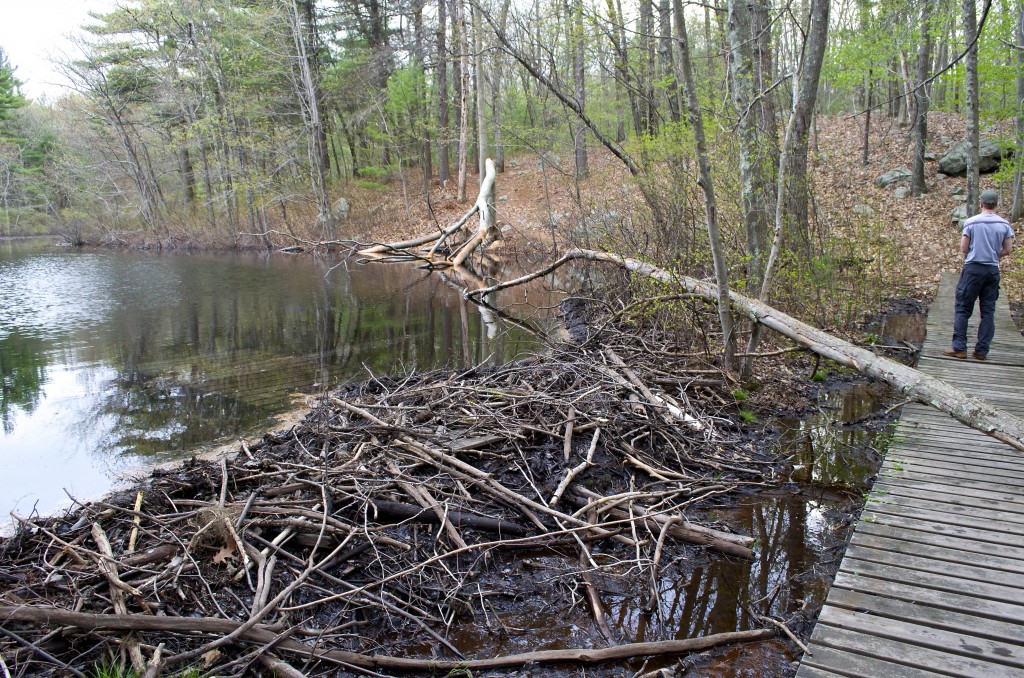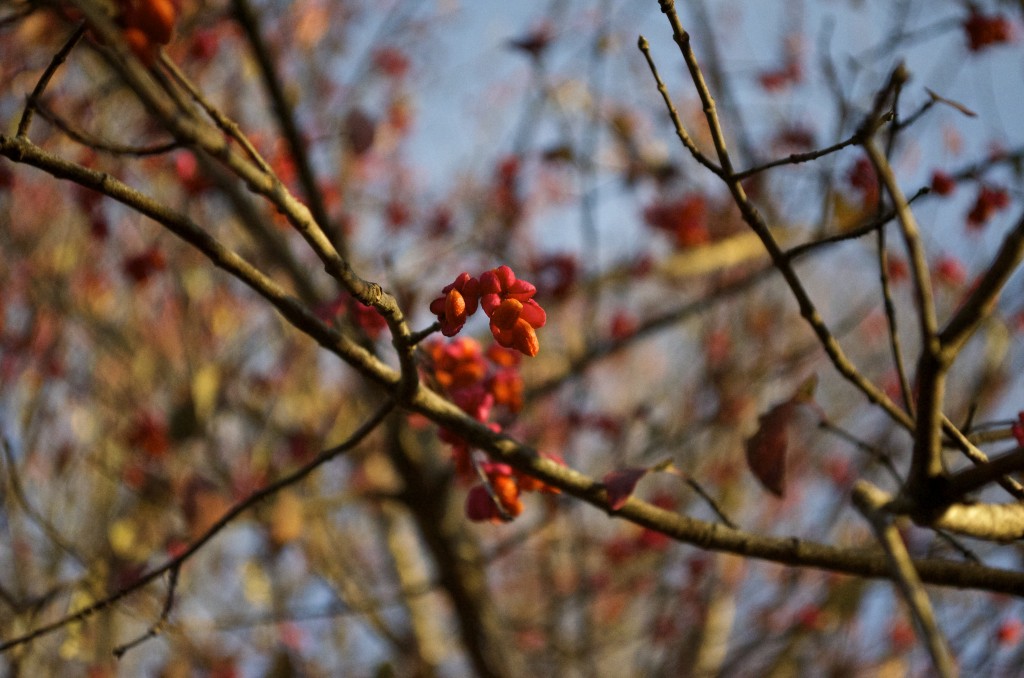These photos are from May 10 of this year… but I just saw some impressive beaver work in Connecticut and it made me want to take another look. First we saw this dam built along the boardwalk…
And then saw what big trees they were taking down. Imagine gnawing those down with your teeth!
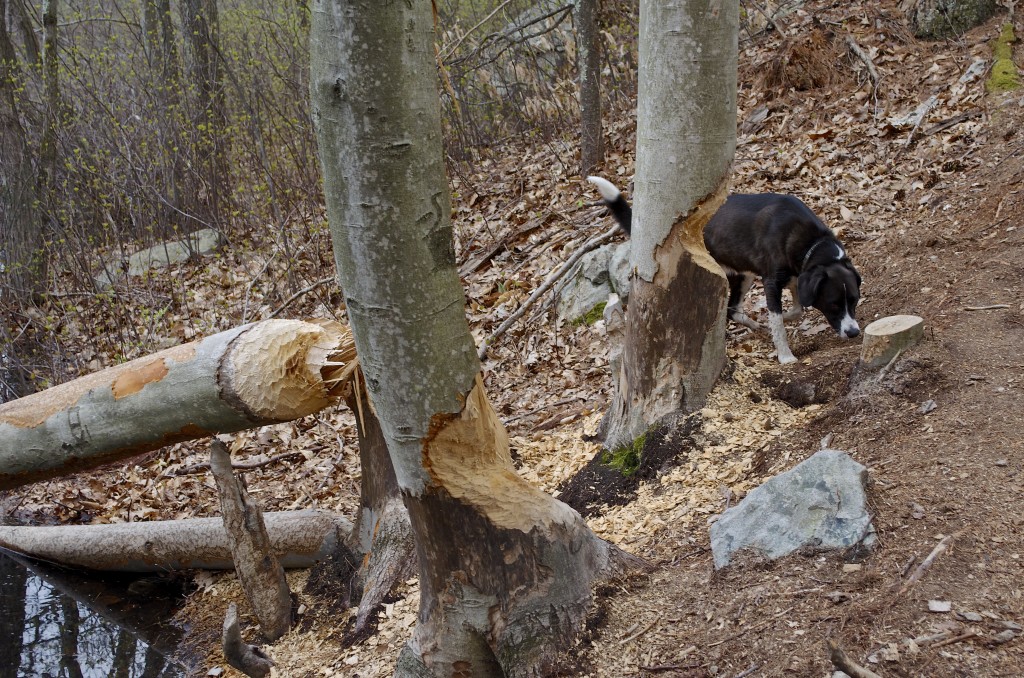
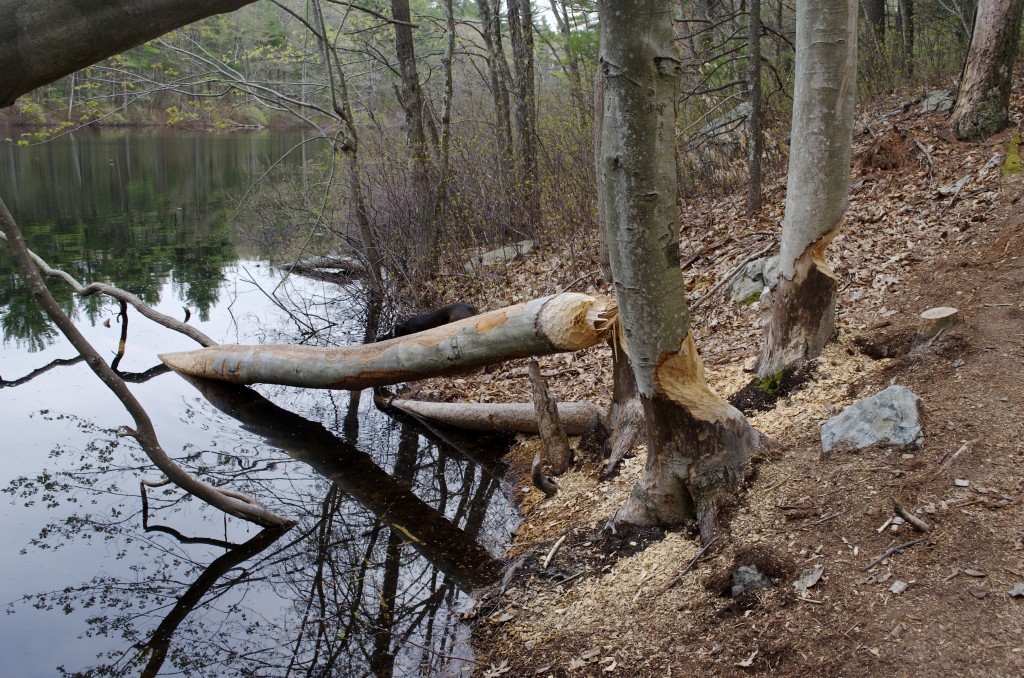
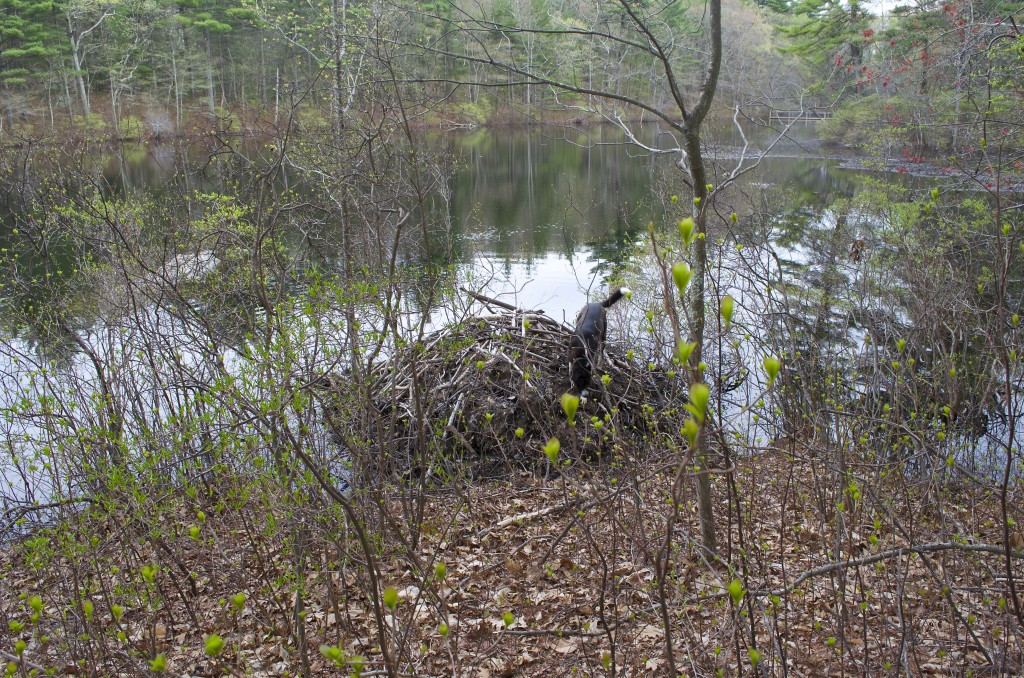 This is their lodge, sited on the shore so dogs could walk on it. (Typically the lodge is supposed to be out in the pond, for protection from terrestrial predators, so these beavers weren’t thinking things through.) I checked for info on beavers in this woods, and only found this, about flooding in residential areas of the town:
This is their lodge, sited on the shore so dogs could walk on it. (Typically the lodge is supposed to be out in the pond, for protection from terrestrial predators, so these beavers weren’t thinking things through.) I checked for info on beavers in this woods, and only found this, about flooding in residential areas of the town:
(Notes from the Selectmen’s meeting, May 2014) Trapper Barry Mandell reported trapping a 60 pound beaver and breaching dams in the Stop River area of town. To date the town has spent $4,700 on trapping services. … Recently passed state referendums have made trapping difficult and resulted in an over abundance of beaver in Medfield and throughout the state. This in turn has resulted in major flooding issues caused by the beaver dams.
Beavers are Massachusetts’ largest native rodents (thank goodness!). The adults can weigh up to 80 pounds! They can live to be around 20 years old. Beavers mate for life and breed January through March. There will be an average of four kits born inside the lodge between April and June. The kits learn to swim in their first week. They stay with the parents for two winters and leave the next spring. A beaver colony is typically made up of two adults, that year’s kits, and the youngsters from the previous year. Their main ecological benefit appears to be that they create wetlands, and that provides habitat for many other kinds of creatures and flora.
I wonder, once they move in, how long do they stay in a pond they have created, and when they’ve eaten all the bark from convenient trees, how far afield will they go to take down more? One of their favorite foods is water lilies, but the inner bark of trees is an important winter food for them. Since they’re quite long lived, it seems like they might stay put for a long time.
Beavers were completely missing from the Massachusetts due to hunting, trapping, and habitat loss, until 1928, when some were seen in Stockbridge, the first recorded sighting since 1750. From roughly 1550 to 1850, felted beaver hats (like top hats) were really popular in Europe, creating a huge demand for beaver pelts and fueling exploration in North America. Luckily for beavers, silk hats became the new fashion around 1850.
Beaver (Castor canadensis)

